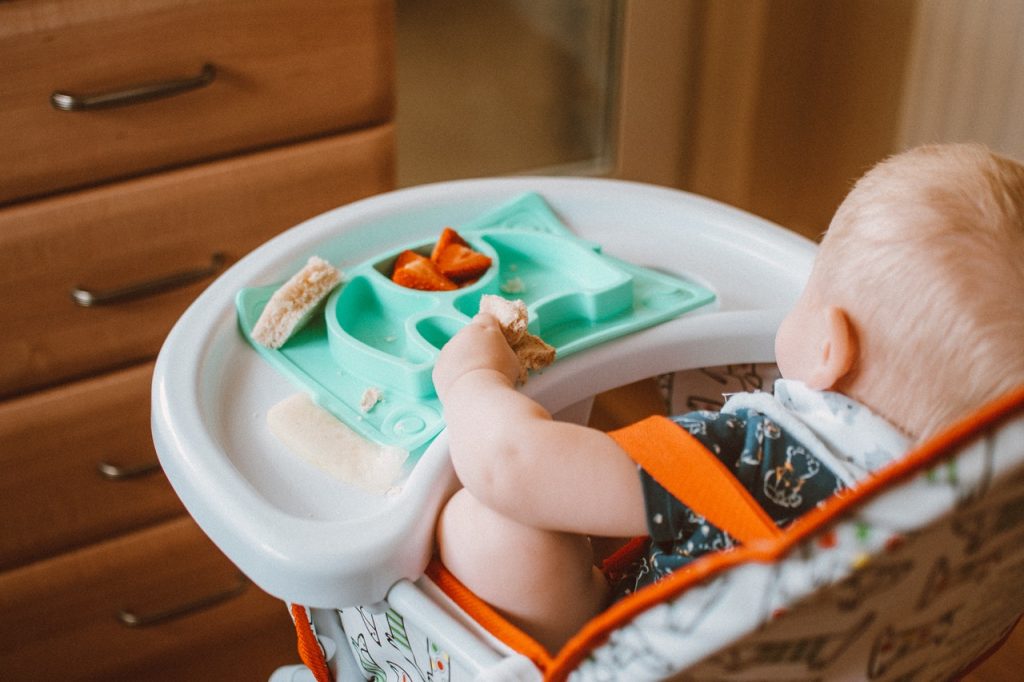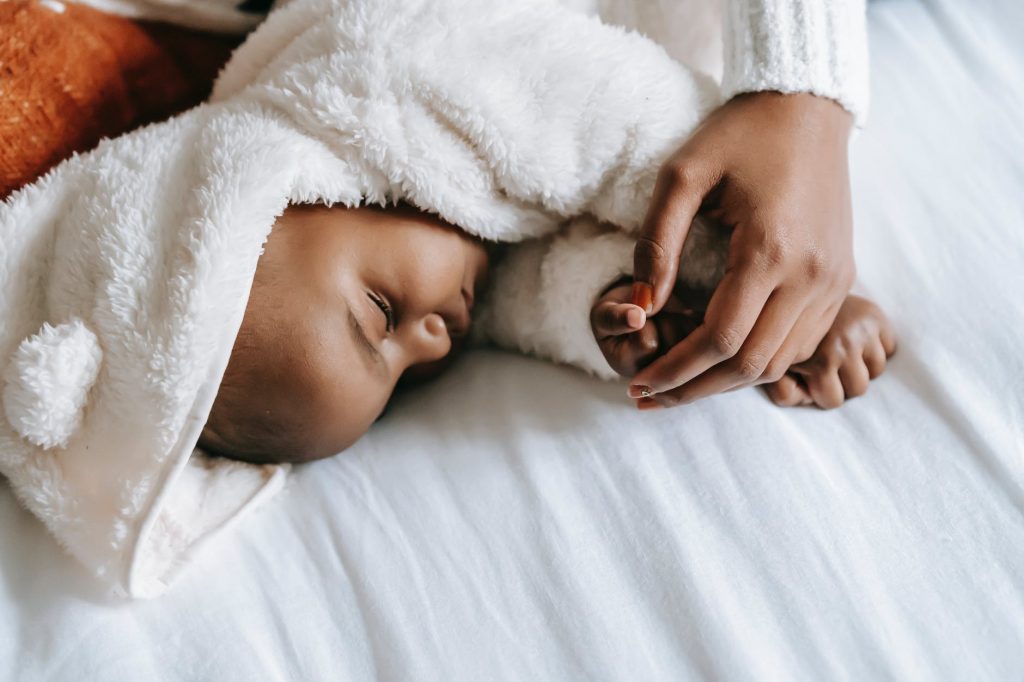This just in; an annual sleep survey carried out by The Lullaby Trust revealed that 44% of parents believe their little ones should be sleeping more. And with the hashtag #cantsleep trending in recent months, it seems like many have been struggling to get their heads down for the night, too.
It’s never too early to start a bedtime routine. Routines are essential, and the earlier you start, the sooner your little one is likely to recognise that there is a pattern of activity that precedes sleep.
The final two hours of the day are particularly crucial in building a settled overnight sleep. Together with the baby’s sleep environment, the practices we have around sleep contribute to what is known as “sleep hygiene” – the better our sleep hygiene, the better the prospect of us, and our little ones, sleeping well.
Here’s how to establish a bedtime routine for your baby in 7 simple steps.
Avoid Screens For At Least An Hour, Ideally Two, Before Bedtime
For great sleep, we want our little one to have a high level of sleep-inducing melatonin at bedtime. The blue light emitted by screens inhibits the production of this super-sleep hormone, so their use is best kept to earlier in the day.
A couple of hours before bed, turn all screens off for the whole family. Of course, checking your baby monitor later in the evening doesn’t count! If you are concerned about how your baby’s sleeping but don’t want to disturb them in the night, then these monitors can really come in handy.
When choosing a baby monitor, our pals over at Yourbaby.co.uk recommend asking yourself what features you want the monitor to have, with “sound, night vision, movement sensors, temperature recording, white noise, video, movement alerts, lullabies and two-way talk” all options.
Eat For Sleep
Aim for the last solid meal of the day to be around two hours before bedtime, though older children may need a bedtime snack if they no longer have milk at bedtime.
Did you know that some foods, such as bananas, eggs, almond milk, and wholegrains like cereals or a slice of brown toast with low-sugar peanut butter, have sleep-promoting properties? On the other hand, sugary snacks and those with hidden caffeine (such as fizzy drinks and chocolate), are common sleep-blockers.

Go With The Flow
When planning the best way to start a bedtime routine, know this; such routines work when there is a flow from the daytime area straight to the bathroom for a soothing bubble bath and then to the room where your child sleeps – with no detours in between. Going in and out of rooms is stimulating for a little one and can make the settling process harder. This is especially true if there is a return to a room that a child associates with daytime play.
Timing Is Everything
For most children, no matter what their age, a bedtime routine of 30-40 minutes is perfect – from the point of going upstairs to them being in a position to fall asleep. This ensures the healthiest sleep and the happiest baby.
A Haven For Sleep
Great sleep has a lot to do with the environment. Using multisensory sleep cues works particularly well for babies and toddlers, and a spritz of that pillow spray we mentioned earlier, designed to complement comforting and peaceful bedtime routines, can really help.
Our sense of smell is incredibly powerful, and essential oils can help our whole body to relax and calm. The familiar smell and the actual act of spritzing can also become a cue for sleep, subconsciously helping a little one to become ready to settle. Allowing a child to take charge of the spraying is a great way of giving some age-appropriate control around bedtime – a useful tool in avoiding a bedtime standoff with an older toddler or preschooler!
Wherever possible, keep the overnight sleep environment consistent with bedtime, all the way down to the multisensory sleep cues.
Though it’s natural for your child to occasionally wake in the night, they’re much more likely to roll over and return to sleep if their sleep-space feels secure and familiar. An age-appropriate comforter can be a great tool in this regard – especially if they have been treated to their own spritz of pillow spray so that it also smells like sleep. Spritzing their comforter is a great technique for when you’re away from home, to remind your little one of home comforts and their everyday bedtime routine.
For little ones who are inclined to suck, once sprayed it is important to tuck the comforter out of baby’s reach to keep them sleep-safe and to avoid them digesting the spray.

A Cool & Comfortable Sleep Space
Temperature plays a crucial role in your baby’s sleep quality. A breathable mini crib sheet can help regulate your baby’s body temperature and provide a comfortable sleep. Keep the room temperature between 20-22°C (68-72°F) for optimal sleeping conditions. Consider using a room thermometer to monitor the temperature throughout the night, as babies can’t regulate their body temperature as well as adults. Remember to dress your baby appropriately for the temperature – a good rule of thumb is to dress them in one more layer than what you’re comfortable wearing.
This follows the same style and tone as the other tips while adding valuable information about temperature regulation and comfort that complements the existing content about creating an ideal sleep environment.
Keep It Consistent
Babies and young children thrive on consistency and predictability – knowing what comes next helps them feel secure. The same steps in the same order, even down to saying goodnight to the same three teddies, can make a real difference in how easily a little one settles down. Similarly, when a little one associates bedtime with smelling a certain way, the presence of that scent will be a powerful trigger for sleep.
The Bottom Line
Once a child has a strong and consistent bedtime routine, it can help them adapt well to a change of environment and/or who puts them to bed as the routine itself provides security and becomes the cue for sleep. Once your baby is sleeping soundly, it’s time for you to recuperate your energy levels, too. Happy sleeping!





